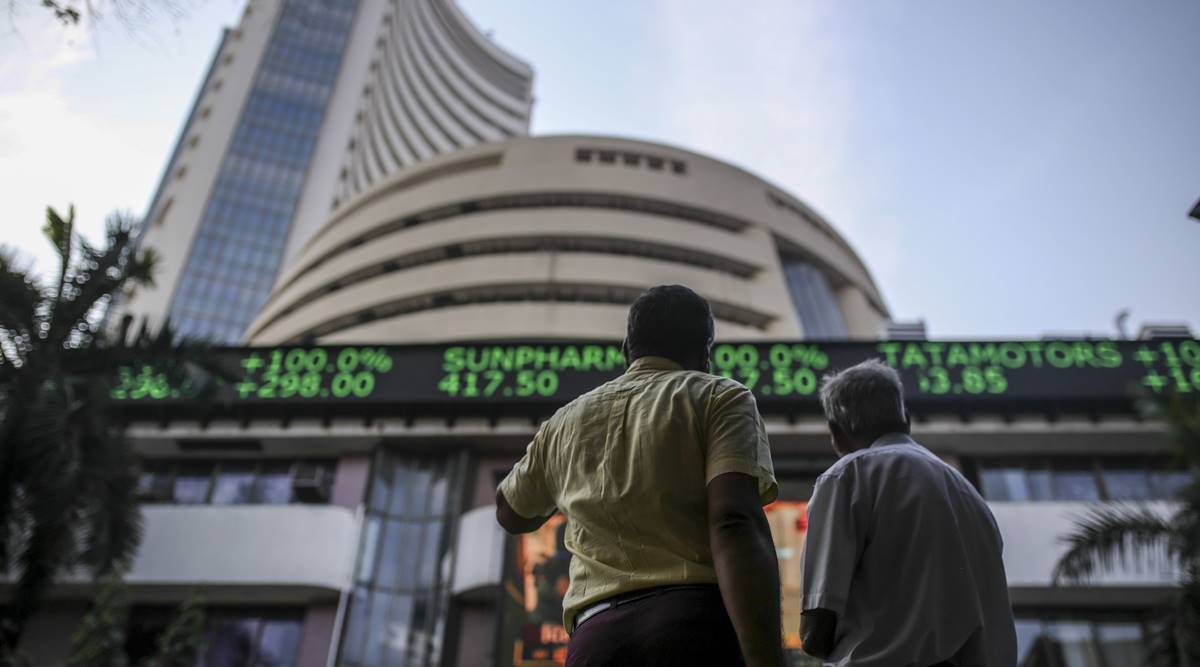[ad_1]
When the domestic stock markets on Tuesday hit another record high, domestic institutional institutions (DIIs) were sellers, refusing to join the buying euphoria. While foreign portfolio investors (FPIs) bought stocks worth Rs 2,134 crore, DIIs made net sales of Rs 785 crore during the day.
Unlike FPIs, domestic institutions (DIIs) led by LIC, insurance companies and mutual funds are not very active in the ongoing bull run. On Monday, FPIs invested Rs 1,995 crore but DIIs pulled out Rs 337 crore. Aided by FPI buying, the Sensex soared by 274 points, 0.42 per cent, to a record high of 65,479.05 and the NSE Nifty soared by 66 points to 19,389 on Tuesday.
According to NSDL data, foreign investors invested around Rs 60,000 crore in April-June period of 2023. However, DIIs invested just Rs 3,368 crore during the period. That was the period when markets rose by over 10 per cent amid the easing of inflation and the RBI decision to keep interest rates steady.
DIIs, who were big buyers when the market was down in the second quarter and fourth quarter of FY2022-23, are now sellers on many days. In the last quarter (January-March) of FY 2023, DIIs had bought stocks worth Rs 83,000 crore while FPIs sold stocks worth over Rs 50,000 crore. “Domestic institutions are contrarians. They buy when other big operators like FPIs sell… and sell when FPIs and others buy. They have made good profits through this strategy,” said a fund manager.
LIC, the largest investor in the stock market, normally sells stocks when the market soars to new peaks. “We sell when others buy, and buy when others sell. LIC has been making consistent profit from its market operations in the last several years. LIC is a long-term investor in the markets,” said an official.
“Clearly, DIIs are sitting on a good profit on investments made by them in the last quarter of FY2023. They are not accumulating stocks at high levels. Ideally retail investors should follow the investment strategy being followed by DIIs. Then they won’t make losses,” said a market analyst. There’s a perception in the market that the stock markets are entering into an overbought zone with valuations hitting new highs. If there’s a major correction, DIIs won’t get any major impact while FPIs and retail investors – normally aiming at making a fast buck — who invest at high levels, will suffer losses.
The FPI sell-off of Rs 1.21 lakh crore in calendar year 2022 was absorbed by DIIs to a great extent, preventing a major crash in the markets since March 2022. A global risk-off sentiment amidst increased risks to global growth contributed to the decline in global equities including India. There were domestic factors at play as well, including high inflation and rising interest rates. Inflows into mutual funds, however, remained robust, as investors turn risk-averse.
Despite huge volatility in stock markets and sustained selling by FPIs, equity mutual funds have been attracting inflows. Significantly, inflow through SIP (systematic investment plan) stood at an all-time high of Rs 14,748.68 crore in May, indicating that retail investors continue to hold confidence on equity investments.
Mutual funds have assets worth Rs 16.56 lakh crore in equity-oriented schemes as of May 2023. The combined strength of MFs, LIC and other insurance companies like New India Assurance can neutralise the impact of FPI buy or sell operations. FPIs are considered as “hot money” which can exit Indian markets faster than they entered.
[ad_2]
Source link
For more information call us at 9891563359.
We are a group of best insurance advisors in Delhi. We are experts in LIC and have received number of awards.
If you are near Delhi or Rohini or Pitampura Contact Us Here







